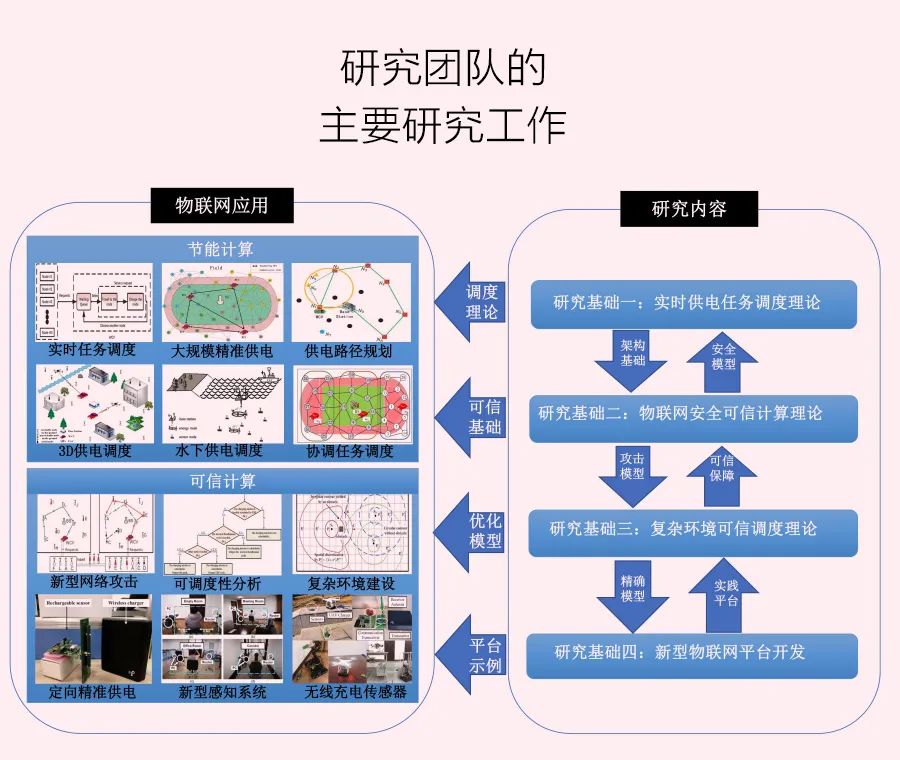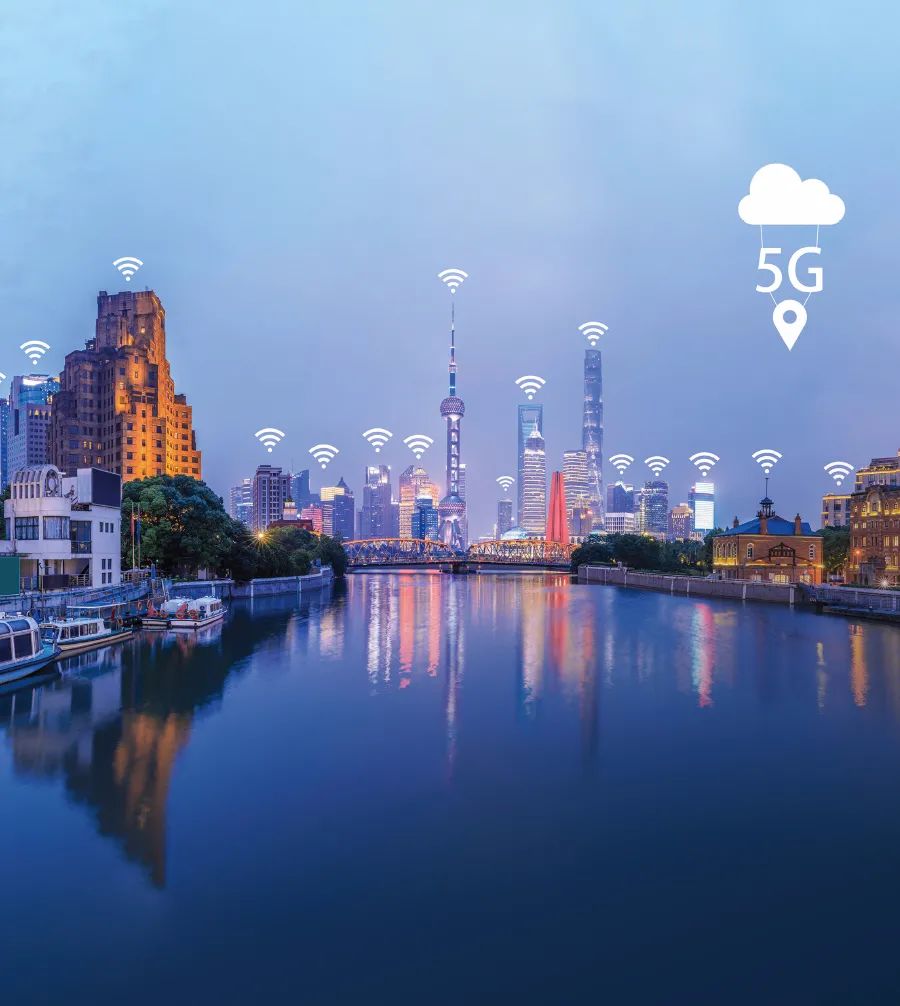━━━━
When wireless charging technology is combined with sensor networks, the resulting wireless charging sensor networks will give rise to a series of newer, better, smaller, faster, and more cost-effective wireless power solutions, shining brightly in people’s work and lives.
In modern society, with the development and popularization of network information technology, electronic products that are ubiquitous in people’s daily lives are inseparable from the network. The wireless sensor network (WSN), characterized by flexible deployment, easy scalability, and high self-organization, plays an indispensable role in this, bringing more possibilities for the interconnectivity of electronic products. From electric vehicles to essential smartphones, from video surveillance to implanted medical devices, from space exploration to power regulation, from agricultural production to smart homes, and from intelligent transportation to industrial process control, people are increasingly aware of the extensive role that wireless sensor networks are playing, bringing dramatic changes to their lives.
In recent years, with the rapid development of new technologies such as cloud computing, big data, and the Internet of Things, and the rapid popularization of 4G and 5G mobile technologies, the development of wireless sensor networks has accelerated, being internationally recognized as the second largest network after the Internet.
However, the limited energy of wireless sensor networks leads to a limited lifespan, which becomes a bottleneck in network performance and is one of the main factors hindering the large-scale deployment of networks.
Fortunately, recent breakthroughs in wireless power transfer (WPT) technology have made it possible to wirelessly transmit energy between chargers and sensors, which not only solves the energy limitation problem but also allows sensors to operate for extended periods. Wireless power transfer, also known as wireless energy transmission or wireless power transmission, primarily achieves non-contact power transmission through electromagnetic induction, electromagnetic resonance, radio frequency, microwaves, lasers, and other methods. Depending on the power supply distance of wireless power transmission, it can be divided into three categories: short-range, medium-range, and long-range transmission.
Among them, short-range wireless power transmission has the highest charging efficiency, such as the increasingly common charging toothbrushes and wireless charging phones. However, they must be placed on charging bases or pads to ensure effective charging, which greatly limits the development of wireless charging. Therefore, attention has shifted to medium and long-range wireless charging. In 2018, Powercast launched the PowerSpot transmitter at the Consumer Electronics Show (CES), which can charge 30 devices simultaneously within 24 meters without wires, showing promising future prospects. However, medium and long-range wireless charging still faces the problem of lower charging efficiency.
Wireless power transfer technology has become one of the most anticipated technologies of the 21st century, making wireless charging products a new focus of attention. Currently, many countries around the world are researching and developing wireless power transfer technology, exploring its applications in different fields, and striving to make it practical.
As wireless charging technology progresses, people are beginning to show interest in wireless charging sensor networks (WRSN). Simply put, a wireless charging sensor network applies wireless charging technology to sensor networks, and this concept will undoubtedly advance the further development of wireless charging technology while also presenting new challenges for researchers.
In recent years, more and more researchers have been dedicated to the field of wireless charging sensor networks, focusing primarily on improving the performance of wireless charging sensor networks. Previous research has made some progress in path planning and cooperative charging, but there are still many shortcomings.
Generally speaking, existing research can be divided into two categories: static charging and dynamic charging. In the static charging mode, the wireless charger cannot move and can only be deployed in a fixed position to supplement energy for the sensors. Therefore, the choice of the charger’s location becomes crucial; improper location selection may lead to nodes dying too quickly in the network and may also result in excessive electromagnetic radiation in certain locations, raising concerns about whether electromagnetic radiation will affect human safety, which has become a current research hotspot. In the mobile charging mode, the charger is carried by a mobile charging vehicle or drone, and one or more mobile charging vehicles move to suitable positions to charge the sensors in the network. Traditional mobile charging methods focus on the selection of charging locations, allocation of charging tasks, and cooperative scheduling among mobile chargers (Mobile Charger, MC), but they have not effectively addressed issues such as the impact of obstacles. Based on existing problems, the research team from Dalian University of Technology has built upon previous research to tackle challenges from multiple aspects, promoting the application and development of wireless charging sensor networks.
Theoretical Foundation Research—Promoting Optimization
With a determined network structure, an excellent charging scheduling strategy is the core of research in wireless charging sensor networks, and the criterion for evaluating the effectiveness of a charging scheduling strategy is the network performance produced by using that algorithm. Recent research by the team has focused on how to utilize computational geometry, submodular optimization, linear programming, dynamic programming, and other methods to design approximate algorithms and distributed algorithms to achieve optimal network performance.
The research team proposed a scheduling algorithm suitable for sensor networks with multiple mobile energy sources based on the theory of queuing. In this algorithm, the team comprehensively considers the time factors, spatial factors, and link structure of the network, establishing a standard for evaluating and measuring node requests, thereby deriving a priority sequence for charging services. For the scheduling of multiple energy sources, clustering algorithm ideas are employed to designate service areas for each energy source and establish a communication and cooperation mechanism among multiple energy sources. Energy is supplemented to nodes based on the request status within the area.
Multi-Directional Extension Research—Promoting Application
The continuous development of wireless charging sensor networks and the gradual formation of infrastructure have made more fine-grained and high-precision research urgently needed, and some unreasonable assumptions have become particularly prominent and require resolution. First, the assumption that the charger antenna is an omnidirectional 360° antenna is no longer reasonable, presenting new challenges for a charger to charge multiple sensors simultaneously (i.e., one-to-many mode), and the charging time allocated by the charger at different charging angles has become the focus of the research team.
Secondly, the assumption that the charger fully charges each sensor before proceeding to the next scheduling step is also no longer reasonable; partial charging has become the mainstream charging mode. How to better combine full charging and partial charging has also become a key research topic.
Wireless charging sensor networks mostly focus on two-dimensional planar networks, using homogeneous charging vehicles to charge nodes to extend network lifespan and optimize system performance. However, in practical applications, nodes are often deployed in three-dimensional space (such as on the ground, tree tops, rooftops), making two-dimensional methods unsuitable. Moreover, the heterogeneity of node energy storage capacity and network charging architecture increases the scheduling difficulty for three-dimensional heterogeneous networks, necessitating the use of heterogeneous chargers to cooperate, i.e., using mobile charging vehicles (WCV) to serve terrestrial nodes and drones (UAV) to power aerial nodes. The research team has achieved efficient three-dimensional heterogeneous charging through reasonable planning of the collaborative charging work of both.
Multi-Field Interdisciplinary Research—Promoting Perfection
Based on the research background of wireless charging sensor networks, multi-field interdisciplinary research has gradually become a research hotspot, such as using game theory for charging scheduling optimization, improving scheduling models based on node hardware characteristics, modeling the charging process affected by obstacles using Fresnel zone theory, and utilizing sustainable computing mechanisms in the Internet of Things to improve energy utilization efficiency and extend network lifespan.
Current research on wireless charging sensor networks mainly focuses on scheduling algorithm design, cooperative charging control, and system performance optimization, but there is still a gap in research on potential new types of charging attacks and their defense methods. Traditional security research in wireless sensor networks mainly targets attacks initiated at the routing layer, such as witch attacks and wormhole attacks, ensuring the confidentiality and integrity of the data transmission process through key management and other means. However, wireless charging sensor networks add the important element of charging scheduling on top of wireless sensor networks. If a node sends a charging request, and the base station schedules a charging vehicle to execute tasks along a predetermined charging path, if the node sends malicious or false charging requests, or if the charging vehicle fails to execute tasks along the specified charging path, some nodes in the network (especially critical nodes) may die due to energy depletion. This new type of Deny of Charge (DoC) attack directly undermines the credibility and security of the network, affecting the reliability of data transmission within the network and potentially leading to disastrous consequences.
Traditional security research in wireless sensor networks only stops at ensuring data reliability and confidentiality, without addressing the security assurance of node charging requests and the charging vehicle scheduling process, making it difficult to combat such attacks (difficult to defend against attacks). The research team’s work is to accurately model the new Deny of Charge attack, quantify and assess the degree of damage it causes to the network, and provide a quantitative basis for attack modeling. Additionally, corresponding detection and identification methods are designed for different Deny of Charge attack strategies, providing solutions. This is of great constructive significance for establishing a credible defense system against new types of attacks in wireless charging sensor networks and ensuring the security of the charging process and task perception.

Obstacles are important influencing factors in wireless charging sensor networks, but due to complex modeling and difficult calculations, research in this area has been shelved. The research team utilized Fresnel zone theory to model obstacles, discovering through simple qualitative models that some locations can even use obstacles for charging enhancement. Finally, by combining the Fresnel diffraction model and considering factors such as the volume, cross-sectional area, and material of obstacles on the received power, a three-dimensional charging model was accurately constructed, which is beneficial for promoting the application of wireless charging sensor networks in complex environments and holds significant guiding significance.
In the research work on sustainable computing mechanisms in the Internet of Things, the research team focuses on the core technologies of “energy efficiency” and “credibility” to provide theoretical guarantees, methodological foundations, and optimization models for three research directions: real-time power supply task scheduling theory in the Internet of Things, security and trusted computing theory in the Internet of Things, and trusted scheduling theory in complex environments, thereby facilitating the development of new Internet of Things platforms.
As is well known, the speed and convenience of wireless charging have always been advantages that people appreciate and look forward to, and more and more companies and scholars are working hard to find newer, better, smaller, faster, and more cost-effective wireless power solutions. A further improvement in wireless charging efficiency will undoubtedly allow wireless charging sensor networks to shine.
Facing the future research hotspots, the research team aims to establish a wireless charging and energy consumption model in large-scale three-dimensional heterogeneous wireless charging sensor networks, considering the complexity of charging tasks and the vast amount of data collected. They design distributed charging and data collection mechanisms suitable for three-dimensional space, achieving adaptive selection of network operation mechanisms, thereby providing effective solutions for the reliability research of three-dimensional heterogeneous wireless charging sensor networks. Meanwhile, the research team has developed a complete system platform with data collection, task monitoring, and analysis functions for three-dimensional heterogeneous wireless charging sensor networks, applying the framework and algorithms for perception, charging, and security to the system platform, thus further optimizing the overall performance of the network and gradually promoting the transition of wireless charging sensor networks from theory to application. We look forward to the infinite possibilities that future wireless charging sensor networks will bring through the tireless efforts of the research team.
Thanks: We would like to thank the National Natural Science Foundation project “Research on Trustworthy Methods for Large-Scale 3D Heterogeneous Wireless Charging Sensor Networks” (Project No.: 61872052), the Key Research and Development Program of the Ministry of Science and Technology (Project No.: 2017YFC0821003-2), and the Dalian Dual Innovation Project (Project No.: 2019J11CY004) for their support of this research.
This article was published in the July 2020 issue of IEEE Spectrum Chinese Edition “Technology Overview”.
LinChi:Dalian University of Technology Associate Professor, PhD Supervisor.。
Wang Lei:Professor at Dalian University of Technology, PhD Supervisor, Vice Dean of the School of Software at Dalian University of Technology.。
Wu Guowei:Professor at Dalian University of Technology, PhD Supervisor, Dean of the School of Software at Dalian University of Technology.。
Luo Zhongxuan:Professor at Dalian University of Technology, PhD Supervisor, Assistant to the President, Secretary of the Party Working Committee of the Development Zone Campus, and Director of the Management Committee (concurrently).。
IEEE Spectrum
“Technology Overview”
Official WeChat Public Platform
>>>This article is original; please reply for reprints.<<<
Previous Recommendations
Machine Learning Reconstructs Wireless Radio
Saltwater Antenna Controls Radio Beam
Helping Radio Devices “Hear” Their Signals




